 
|
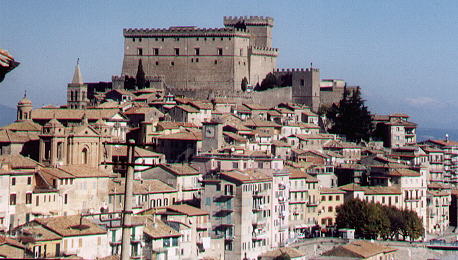 | ||
The castle was built by Nicolaus III in 1278 and its imposing mass dominates the view of Soriano.
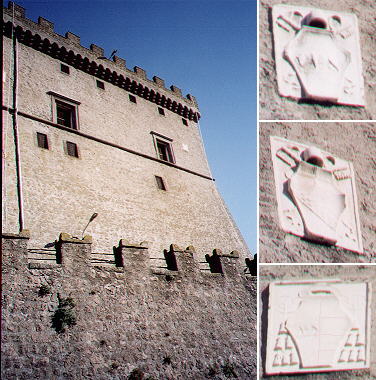 | ||
The medieval castle was strengthened in the second half of the XVth century: two coats of arms of popes of that period (Callistus III, 1455-58 and Innocentius VIII, 1484-92) attest to the importance of the fortress for the defence of the papal state: a third coat of arms, that of Cardinal Rodrigo Borgia is a sign of the role played by him for nearly fifty years, at first as Vice Chancellor of the pope under five popes and finally as pope Alexander VI (1492-1503).
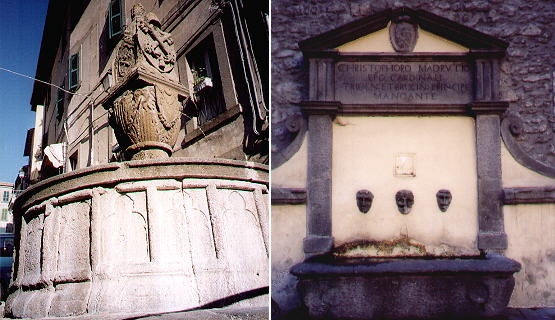 | ||
Soriano can rely on an ample supply of water and has several fountains. Nicolaus IV (1447-55) is honoured in the so called Fontana di dentro, the fountain inside the old walls of Soriano. The fountain has the typical spindle shape of the fountains of Viterbo. In the second half of the XVIth century Soriano belonged to a German cardinal who built another fountain outside the walls.
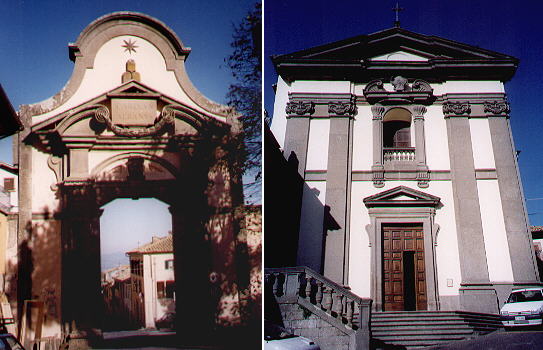 | ||
In the XVIIIth century Soriano was acquired by the Albani, the family of pope Clemens XI (1700-21). Under their rule Soriano was enlarged and given new walls. A large gate announced to the travellers coming from Rome that they were entering a town belonging to the Albani (the three mountains topped by a star were the heraldic symbol of the Albani). The Albani gave a new fašade to S. Eutizio, the main church of the old part of Soriano (the image in the background of this page shows the star of the Albani in the ceiling of S. Eutizio).
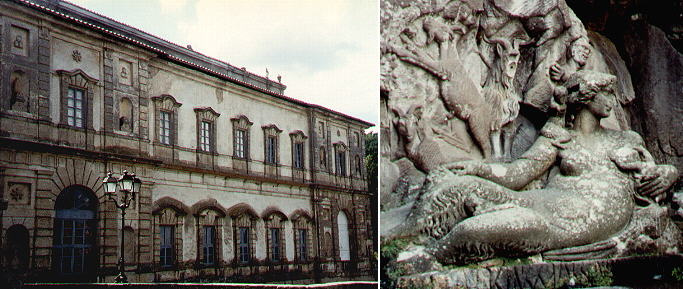 | ||
The Albani enlarged the palace built by the previous owners of Soriano and which had been designed by il Vignola. The gardens are embellished with several fountains, one of which is directly sculpted in the rock.
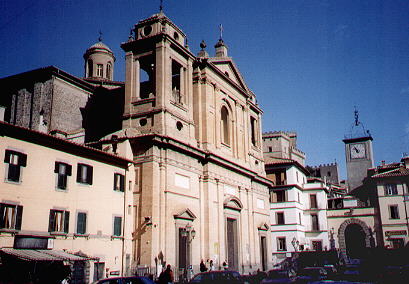 | ||
Soriano was bombed during World War II and the entrance to the old town was greatly damaged. The large cathedral is a late XVIIIth century building designed by Giuseppe Camporese and its fašade shows the impact of Neoclassicism on a typical Baroque design.
Around Monte Cimino - other pages:
Ronciglione
Caprarola, Carbognano and Fabrica
Corchiano, Vignanello and Vallerano
some other walks:
Walks with Ferdinand Gregorovius in the Roman countryside
In and about Viterbo
From Civitavecchia to Civita Castellana
A walk to Porta Furba
Via Appia Antica from Cecilia Metella to Torre in Selci
Via Appia Antica from Torre in Selci to Frattocchie
See my Home Page on Baroque Rome or my Home Page on Rome in the footsteps of an XVIIIth century traveller
All images © 1999 - 2003 by Roberto Piperno. Write to romapip@quipo.it
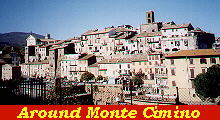 Soriano al Cimino
Soriano al Cimino